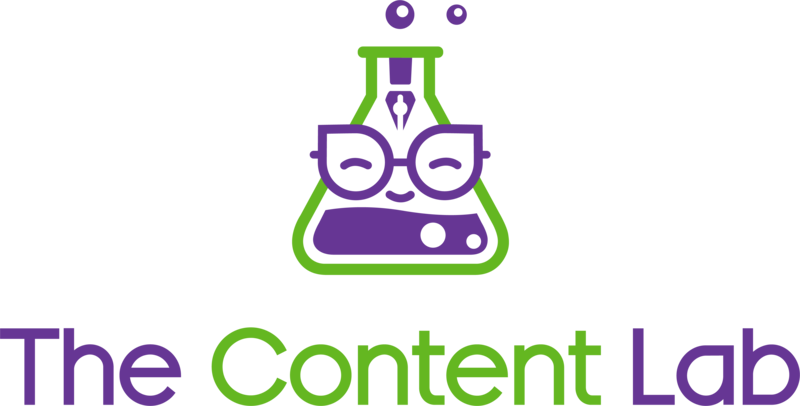When you work in the digital field, it feels like everything depends on high-quality copy. These days, publishing houses, magazines, and newspapers aren’t the only ones who need copy editors to keep a close eye on their content anymore. Digital agencies, bloggers, and even other content writers now need copy editors to keep their copy clean and error-free, too.
But when you’re running a digital agency, you’re already juggling a million tasks, deadlines, and priorities that demand your time and attention. Spelling and grammar might be the furthest from your mind. We get that!
But did you know that a whopping 97.2% of people say grammar mistakes influence their perception of a company? And not in a good way. When it comes to correct spelling, studies show that typos can have a devastating impact on click-throughs, conversions, and bounce rates.
The devil really is in the details. But the good news is, details are a copy editor’s middle name! If you haven’t thought about hiring a copy editor to keep your copy in tip-top shape yet, you might want to.
So, what exactly is a copy editor? (Or should that be proofreader…?) And how can they leverage their copy editing skills to optimise your copy for success?
Read on, and we’ll give you the full inside scoop on what a copy editor is, what they do, and why you might want to have one on your team.
Let’s do this!
What is a copy editor?
Copy editors are eagle-eyed word nerds, able to spot a dangling participle or split infinitive at sixty paces, and easily recognisable by one of their distinctive calls – like this one:
“Um, actually, that should be ‘they’re’ instead of ‘there’.”
Not sure what a participle is? Well, there’s good news: with a copy editor in your corner, you don’t have to!
Practically speaking, technical certification isn’t required to become a professional copy editor. But, many copy editors do complete specialised training, and most tend to have at least a Bachelor’s Degree in a field like English, Writing, Marketing, Communication, or Publishing.
With or without this training, a copy editor’s skill is rooted in a deep understanding of grammar, syntax, spelling, and punctuation.
And, of course, they’ve developed a keen eye for detail, structure, and tone – often a natural knack that they sharpen over time with practical experience.
Whether they’re full-time or part-time, in-house or freelance, a copy editor’s job is to read written material and assess its clarity, technical consistency, and quality. They correct any errors and make suggestions to smooth out, tighten up, or improve clarity of the language. Finally, they deliver feedback to the writer for final implementation.
The goal of copy editing is to make sure the writing is readable (clear, concise, consistent, and correct) and engaging (well-structured, well-paced, and well-put). The copy editor aims to ensure the highest possible quality before the copy goes to print or publication. From a bird’s-eye view of the intent and impact of the content to laser-focused scrutiny, right down to the last letter, comma, dot, or dash – the editor sees all!

What does a copy editor do?
The exact job description, role responsibilities, and day-to-day tasks of a copy editor may differ slightly depending on the needs of the clients they work with or the company they work for. But typically, when it comes to editing projects, a copy editor’s job includes:
- Correcting errors: Spotting and correcting any spelling, punctuation, grammar, and typographical errors that appear in the copy (hey, everybody makes mistakes!). Copy editors often adhere to style guides to meet industry standards.
- Tightening the language: Keeping sentences and paragraphs clear, concise, and uncluttered. Optimising word usage and trimming out extraneous words, reducing unnecessary repetition.
- Clarifying meaning: Suggesting adjustments to simplify complicated terms and clear up any awkward or unclear phrasing. The goal here is to avoid confusion and improve readability.
- Restructuring for clarity and flow: Creating the clearest, smoothest possible experience for the reader. This might include rearranging the order of words, phrases, list items, sentences, or even whole paragraphs.

- Keeping the voice active and engaging: Making sure the voice of the copy stays in the active (vs. the passive) mode and that each word choice is clear, appropriate, in line with the copy’s intent, and designed to delight the intended audience.
- Ensuring consistency: Enhancing the overall quality of the copy by keeping things consistent throughout, with or without the help of in-house style guides. This includes elements like grammar, language, voice, tone, verb tense, pronouns, format, and style.
- Fact-checking: Ensuring factual accuracy of all details or stats included in the copy and that the links embedded in the content lead where they’re meant to lead. This aspect of the copy editor role is more prevalent in some industries (e.g. journalism) than others.
- Communicating feedback: Delivering notes, corrections, and suggestions to the writer in a kind, respectful, and empowering way (i.e. not harshly, smugly, or hyper-critically).
Remember: Editorial style and technical skill are critical for copy editing. But when it comes to partnering with a professional copy editor, their ‘soft’ interpersonal skills are just as important. If a writer-editor relationship is going to last, it needs to be built on mutual trust and respect.
The feedback of a hyper-critical editor may have a negative impact on the writer’s confidence, approach, and, ultimately, the quality of their work.
Good copy editors are more than meticulous – they’re respectful and supportive members of a creative team. Keep this in mind when you’re hiring!
What's the difference between copy editing and proofreading?
Wait, there’s a difference? Technically, yes! They’re often confused or conflated, but proofreading and copy editing are two different tasks, often performed by two different people on a writing team!
Think of it this way:
Imagine a 5-star restaurant. Copywriters are like gourmet chefs, wielding their world-class talent and training to cook up not just one meal but a whole menu to serve to the masses.
Copy editors are like line cooks, plating the meal once it’s prepared and making sure the presentation is flawless before it goes out to the table.
The proofreader gives the presentation one last look (and maybe swipes that stray drop of sauce from the rim with a napkin) before whisking it out to the dining room floor.
Ooh, now I’m hungry… Sorry, what were we talking about?
Oh, right. Cooking analogies aside, let’s look at how the roles of copy editor and proofreader overlap and how they don’t.
What is copy editing?
As we’ve established, the copy editing process is both technical and creative. Copy editors take a fine-toothed comb through written material, analysing it both holistically and line by line. They check for errors and inconsistencies, making corrections and suggesting adjustments to reduce repetition, eliminate mistakes, amplify the voice, and engage the reader. Taking structure and word usage into account, they suggest rearrangements or alternate phrasing when necessary to optimise the copy to achieve its purpose.
This is called substantive editing, and it involves both line-by-line focus (line editing) and a broad, holistic view (substantive editing) of each piece.


What is proofreading?
The proofreading process is almost entirely technical, and the proofreader is usually the last person to look over written content before it’s approved and moves on to the publication process.
They sift through the text for any remaining typos, punctuation errors, grammatical mistakes, or inconsistencies that may have slipped past the writer and the copy editor – or that may have occurred as material was added to or moved around in the copy during the copy editing process.
Depending on the industry they’re working in, a proofreader may take on the task of fact-checking the final copy to ensure it’s free of any factually incorrect statements, though sometimes the copy editor has already covered it.
In short: Not all proofreaders are copy editors…but most copy editors are proofreaders, too (if they’re like me, they can’t help it!). To get the most bang for your buck, we say get you a pro that does both!
Why do you need a copy editor?
Now that you’ve got a better handle on what a copy editor is and what they do, squinting at their screens all day, you might be thinking, “But do readers actually care about a couple of mistakes? Does all this grammar stuff really matter?”
In the text-flooded internet landscape, correct spelling and grammar are the bare minimum requirements if you or your clients want to stand out, rank high in searches, establish brand authority, and build trust with your audience. And if you want to see a positive return on investment when it comes to content creation and ad spend, hiring a professional copy editor is a pretty savvy move.
“Yeah, but I’ve got spellcheck. Couldn’t I just proofread and edit myself?” Well… yes and no.
It’s actually incredibly difficult to catch all our own mistakes and inconsistencies.
But whether you or your clients hire professional writers to handle your content or prefer to roll up your sleeves and do it yourself, there’s plenty of editing software and plugins – like our old friends spellcheck, Grammarly, and Hemingway – available to help you refine your own writing.
These copy editing tools are great, and they can definitely help you proofread and improve your working copy… but they can only do so much. Because they work based on algorithms, a few errors (and a whole lot of human nuance) will inevitably slip past them. And worse, these tools may suggest changes that actually create errors in the process.
There’s no doubt – text tech is getting really sharp! But here are a few things AI and algorithm-based proofreading and editing software still can’t handle quite as well as their human counterparts:

- Keeping brand voices consistent: You and your clients need distinct, recognisable human voices for your brands to resonate with a human reader. A human copy editor knows when to stick to the rules, and when it’s okay to bend them a little in favour of effective brand voice and messaging.
- Understanding context: There’s more going on on the page than meets the eye. A human copy editor can see the bigger picture – beyond spelling and punctuation – that algorithms tend to miss. And the longer they work with you and your clients, the more context a human editor can use to optimise each piece of copy.
- Navigating cultural and regional linguistic nuances: If you’ve ever tried to learn another language, you know that nuance is everything! Proofreading and editing tools can help make your writing technically correct. But they may not understand the creative, colloquial, or industry-specific way you write your copy like a human copy editor can.
- Making detailed adjustments to the structure or organisation of info: Some tools can suggest alternative word choices or punctuation marks throughout your work – but others can’t. And even those that can will only be able to focus on a very limited word- or sentence-level scope. They won’t be able to make recommendations on the overall structure or organisation of the copy.
- Using critical judgement: At the end of the day, sometimes critical judgement is called for. When something is technically right but feels wrong, you need a human copy editor with the necessary knowledge, experience, and instincts to guide you.

Don’t get me wrong – spelling and grammar tools should absolutely be part of your content creation, proofreading, and editing process. We use them here at TCL all the time! But for the best results, they should always play a supporting role to a true-blue human copy editor and proofreader.
If you’ve read this far, you’ve learned what a copy editor is, what they do, and how they can do more for your written content than AI- and algorithm-based editing tools.
You’ve gotten a better understanding of what distinguishes a proofreader from a copy editor. Plus, you’ve discovered how professionally edited copy can lead to better engagement, increase conversions, and improve the overall credibility of your brand.
And, most importantly, you’ve discovered how, with a good copy editor by your side, you can keep your copy clean, clear, consistent, and optimised for engagement and accuracy. Not to mention free of embarrassing errors that can wreak havoc on your credibility.
Clean up your copy with The Content Lab
Copy editing can be a tough job, but somebody’s gotta do it.
Here at TCL, copywriting and copy editing are the name of our game! We’re proud to be word nerds, producing high-quality, expertly-edited content so you don’t have to.
Whether you or your clients have old blog content, website copy, or marketing content in need of a revamp, or you’ve written some new material and need some professional eyes on it – our in-house copy editor’s got you covered.
Sick of staring at a blank page? Don’t worry; our team of expert copywriters can get the job done – one line, one sentence at a time. Get in touch to ask about our copy editing services and discuss all your content needs.
Other Posts
 Content Accessibility
Content Accessibility 
